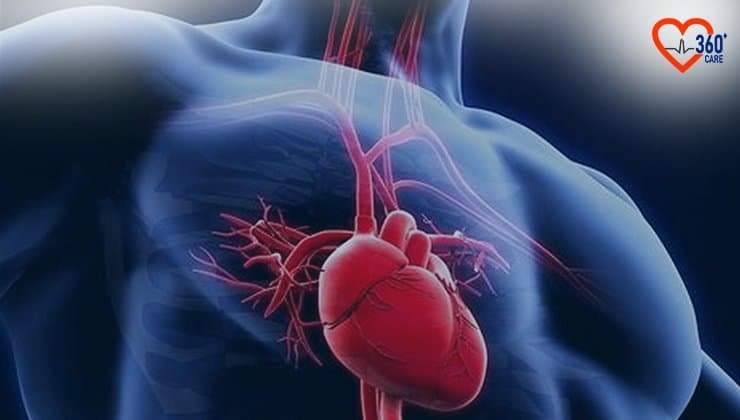Angioplasty and heart bypass surgery are both commonly used medical procedures used to treat blocked or clogged heart arteries.
Arteries are the blood vessels that carry oxygen-rich throughout the body. With time, the buildup of fat and cholesterol, known as plaque, on the inner walls of the arteries can result in clogging, narrowing, or blocking of the arteries, resulting in reduced blood flow to the heart.
This could lead to various problems like heart attack and stroke. Procedures like angioplasty and bypass surgery help treat these blocked arteries.
In this article, we will discuss the difference between angioplasty and bypass surgery.
What is Angioplasty?
Angioplasty is a medical procedure performed to open the blocked or narrowed heart blood vessels, usually arteries, and restore the blood flow to the heart.
When is Angioplasty Performed?
An angioplasty is usually recommended to treat atherosclerosis, which is a condition involving the buildup of fat, cholesterol, and other substances (plaque) on and in the walls of the heart/coronary arteries. This leads to the narrowing or blockage of the arteries, a condition known as coronary artery disease.
Angioplasty can help improve the blood flow to the heart. This treatment is recommended when:
- Medications and lifestyle changes have failed to manage coronary artery disease and improve heart health.
- Chest pain (angina) caused due to the blocked arteries becomes more severe.
- Blood flow needs to be restored quickly to treat a heart attack.
The Angioplasty Procedure
The procedure for angioplasty is done as follows:
- The patient is given sedatives to help him or her relax while staying awake during the procedure.
- The cardiologist or cardiac surgeon then administers local anesthesia to numb the area of the incision before making a tiny cut or incision in the arm, wrist, or groin region.
- A catheter will now be inserted through the incision and gradually guided towards the heart.
- A contrast dye will be injected inside the coronary arteries. This dye highlights the blood vessels of the heart in the X-rays taken thereafter.
- The surgeon will then insert another catheter tube with a tiny, deflated balloon present on one end towards the site of the blockage.
- Once the balloon reaches the blockage site, it will be inflated by the surgeon to help open and expand the blocked artery and improve the blood flow to the heart.
- Sometimes, a tiny mesh tube or stent may be inserted into the blocked artery to help it stay open. Some stents may have medical coatings to prevent blood clot formation.
- The doctor will now remove the deflated balloon to complete the procedure.
The procedure takes about 30 minutes to two hours to complete.
What is Bypass Surgery?
Bypass surgery, also known as coronary artery bypass grafting (CABG) is a type of surgery performed to reroute the blood flow around narrowed or blocked coronary arteries.
When is Bypass Surgery Performed?
A heart bypass surgery is generally recommended in the following cases:
- Severe blockages in the coronary arteries
- Multiple narrowed heart arteries
- Blockage or severe narrowing of the left main artery of the heart (aorta)
- Severe chest pain that does not improve with medications
- Heart attack
- Improper function of the lower left heart chamber (left ventricle)
- Blockage that cannot be treated using angioplasty
- Failed angioplasty or stent placement
The Bypass Surgery Procedure
The following steps are performed during a bypass surgery procedure:
- The patient is given general anesthesia to put him or her to sleep before the procedure.
- The surgeon then makes an incision along the breastbone (sternum) to access the heart. In certain cases, a few smaller incisions are made to perform the surgery using a minimally invasive technique.
- The patient’s heart is stopped and the patient is attached to a heart-lung bypass machine, which will take over the function of the heart and the lungs during surgery.
- The surgeon will then harvest the healthy blood vessels usually taken from the saphenous vein in the leg or the internal mammary artery in the chest region. These blood vessels will be used as grafts for bypassing the blocked coronary arteries.
- The harvested blood vessels will be sewn into place carefully to create new pathways or bypasses for the blood to travel around the heart’s blocked areas. The bypass grafts help divert the oxygen-rich blood from a healthy artery, like the aorta, to the area of the coronary artery that is blocked.
- Once the grafts are in their proper place, the patient will gradually be weaned off the heart-lung machine.
- The chest will now be closed using sutures.
This procedure takes about three to six hours to complete.
The Key Difference Between Angioplasty and Bypass Surgery
The important differences between angioplasty and bypass surgery are as follows:
- Invasiveness: Angioplasty is a minimally invasive procedure, whereas bypass surgery is a major type of open-heart surgery that takes several hours to complete.
- Longevity: Stents are often needed in cases of angioplasty to keep the arteries open, but these stents may require repair or replacement after some time due to blockages or some other complications. Bypass surgeries generally give permanent results and are considered to be more successful in restoring the blood flow to the heart.
- Recovery time: Patients undergoing angioplasty need to stay in the hospital for one or two days after the procedure, whereas a patient undergoing a bypass surgery may need to stay in the hospital for a week or more and need a longer recovery time.
Pros & Cons of Angioplasty & Bypass Surgery
Both angioplasty and bypass surgery have their own pros and cons, which include the following:
- Angioplasty
Pros
- Shorter recovery time
- Less invasive compared to bypass surgery
- Rapid relief from symptoms
Cons
- Not recommended for all types of blockages
- Stents may require repair or replacement after a few years
- Risks like bleeding and stroke
- Bypass surgery
Pros
- Can treat complex blockages
- A fairly permanent solution to restore the heart’s normal blood flow
Cons
- Not suitable for some patients with underlying medical conditions.
- Invasive procedure with prolonged recovery time.
- Higher risk of developing complications compared to an angioplasty.
Angioplasty vs. Bypass: Which is the Optimal Choice for You?
Many factors need to be considered when deciding which is the right treatment option for a patient between angioplasty and bypass surgery. These factors include the following:
- Age and health condition of the patient
- The severity and extent of coronary artery disease present
- The patient’s overall heart function
- Current symptoms of the patient
- Presence of co-morbidities like hypertension and diabetes
- History of heart attack or stroke
- Patient’s preference
Angioplasty is generally recommended for patients with less or limited blockages in the coronary arteries who do not have co-existing medical conditions.
Heart bypass surgery is generally recommended in patients with multiple blockages or the blockage of the main left heart artery. However, elderly patients of more than 80 years of age or weak patients are not considered to be good candidates to undergo a major surgery like bypass surgery.
You should get in touch with a good cardiac surgeon like Dr. Nikhil P.J.Theckumparampil, Consultant Cardiac Surgeon & Heart Specialist at Heart360 Care in Chennai, to get yourself evaluated thoroughly and determine the best option for you between angioplasty and bypass surgery.
Risks of Angioplasty vs. Bypass Surgery
Both angioplasty and bypass surgery have their own risks depending on the severity of heart diseases among other factors. The angioplasty vs bypass surgery risks are as follows:
Angioplasty risks
- Damage to the coronary arteries
- Heart attack
- Stroke
- Allergy to the contrast dye used
- Bleeding that may need a blood transfusion
- Death
Bypass surgery risks
- Infection
- Atrial fibrillation
- Stroke
- Decreased kidney function
- Heart attack, especially in the first month following surgery
- Death
Comparing the Costs: Angioplasty vs. Bypass Surgery
The cost of angioplasty and heart bypass surgery in India will vary depending on several factors like the age and health of the patient, severity and type of heart blockage present, the expertise of the cardiac surgeon, location and reputation of the hospital, the technology and facilities used, etc.
The cost of angioplasty in India generally varies between INR 70,000 to INR 2,50,000, whereas the cost of bypass surgery in India generally varies between INR 90,000 to INR 5,00,000.
Conclusion
Angioplasty and bypass surgery are both considered to be effective treatment methods for coronary artery disease. However, there is a key difference between angioplasty and bypass surgery in terms of their invasiveness, longevity, procedure, cost, and recovery time.You can book a consultation appointment with the best cardiac surgeon in Chennai at Heart360 Care to know which procedure is most suitable for your condition.
Frequently Asked Questions
Yes, bypass surgery may be recommended after angioplasty if the stent placed during an angioplasty fails to remain in its place or collapses over time.
Angioplasty is not recommended in the following cases:
1. Small blood vessels
2. Blood vessel bruising
3. Allergy to the stent components
4. Inability to tolerate the antiplatelet therapy
5. Severely calcified arteries
6. Recent hemorrhagic shock
7. High risk of bleeding or active bleeding
8. An active form of malignancy with a reduced life expectancy
An angioplasty is less invasive and quicker compared to a bypass surgery. However, bypass surgery may be a better option in cases of multiple blockages or a blockage in the main left heart artery.
As per studies, there is no major difference in the survival rate of patients who have undergone angioplasty with stenting compared to patients undergoing heart bypass surgery after 10 years.
The factors that influence the decision to choose between angioplasty or bypass surgery for a patient include the age and health of the patient, number and severity of blockage present, symptoms present, heart function, history of heart attack or strokes, and patient preference.









